Folio Society
Folio Society
For the discerning book collector, the Folio Society has long stood as a bastion of literary beauty and craftsmanship. Founded in 1947 by Charles Ede, this London-based publisher began with a vision to create books that were both readable and collectible—combining the best of literature with high-quality design and production. Over the decades, the Folio Society has built a reputation for producing some of the most visually striking editions of classic and modern works, catering to both the bibliophile and the art lover.
Jump below to read more about the Folio Society if you’re interested…

Folio's Myths & Legends Series
A video overview and review of the leatherbound myths and legends series released by the Folio Society. 1996-2011.

Folio Society & Agatha Christie
A guide to all of the high quality Folio Society releases of Agatha Christie classics. 1990-present.

Limited Edition "Cherished Tales"
The Folio Society’s limited edition leatherbound series of six cherished tales, each of which is illustrated by a contemporary artist. 2008-2016.

Folio's Classic Fairy Tales
A video review of a collection of classic fairy tales by the Folio Society, mostly facsimiles from the golden age of illustration.

Japanese Tales
A review of the Folio Society fine press edition of ‘Japanese Tales’ by Royall Tyler.

Rainbow Fairy Books
An overview and illustration gallery for Andrew Lang’s famous collection of fairy tales.
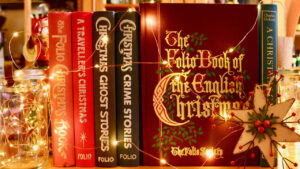
A Very Folio Christmas
An overview of the Folio Society’s Christmas Books, including the stories in each volume and a video review.
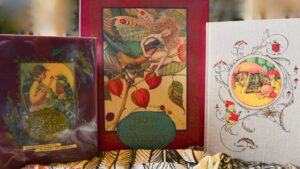
How to See Fairies
A review of the various editions of Charles van Sandwyk’s ‘How to See Fairies’ book – private press, standard and Folio Society treatment.

East of the Sun, Taschen vs FS
A comparison between the loveliest editions of East of the Sun, West of the Moon with Kay Nielsen’s incomparable illustrations: Folio Society, Taschen and Calla Editions.
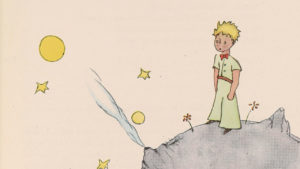
Hidden Secrets in Folio's Little Prince
Uncovering the hidden flip book in the Folio Society’s commentary volume for The Little Prince by Antoine Saint-Exupéry.
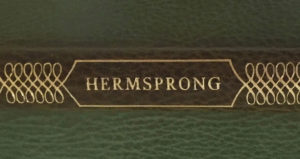
Rare Folio Society Bindings
An overview of the extremely limited special bindings series Folio employed in 1960.

The Princess Bride
An overview of the most wonderful editions of The Princess Bride book from Folio's fine press treatment to the salacious controversial first edition paperback.

Spooky Folios
Peek inside a collection of Folio's best ghost stories, gothic fiction, poetry and dystopias. 1956-2015.

Miniature Poetry
A video review of the cute Folio Society miniature poetry series. 1991-1999.
A little bit more about the Folio Society
(Yes, I’ve been collecting them for many, many years…)
A Storied History
The Folio Society’s origins date back to post-World War II Britain, a bleak time of rationing (including paper) when unillustrated mass-market paperbacks had become the dominant form of book production.
Having studied at the London School of Printing, Charles Ede wanted to create a different experience, one that celebrated not only the written word but also the physical book as an object of art. The Society’s genesis was rooted in a noble ambition: to produce “editions of the world’s great literature, in a format worthy of the contents, at a price within the reach of everyman”. Charles believed that good design and production should be available to everyone and not just the rich, he embarked on a plan to produce books to the highest possible standards using commercial methods.
In its early years, The Folio Society focused primarily on established classics, a decision driven partly by Charles Ede’s belief that only time-tested works deserved the expense of fine binding, and partly by financial necessity. The company’s first offering, Tales by Tolstoy (illustrated by Elizabeth Macfadyen), debuted in October 1947, priced at sixteen shillings—a sum that would translate to just over $33 in today’s currency. This publication set the tone for what would become its hallmark: a balance between content and design, offering something more tactile and enduring than the throwaway culture of paperbacks.
As the Society grew, so did its ambitions. It began to commission new translations of foreign language texts and pioneered the publication of eyewitness histories. The 1956 release of The Trial of Joan of Arc, featuring the first English translation of Joan’s own words, exemplified this innovative approach
In the early years, Folio Society (colloquially known as FS) books were produced in small print runs, often with just a few hundred copies per edition. The ethos was clear: these were books made to be kept, not discarded. They were also made to be read – Ede was adamant that his editions should be affordable, accessible, and durable. For many collectors, the idea of owning a library of exquisitely produced books was an alluring alternative to the more ephemeral publishing landscape.
However, Folio’s path to success was not always smooth. In its infancy, the company struggled to find its footing in the market. Booksellers were initially reluctant to stock these hybrid creations that straddled the line between luxury editions and commercial publications. It was only when the Society began offering direct subscriptions, sweetened with the promise of a special “Presentation Volume”, that it found its audience
The Evolution of Design
The Folio Society’s design aesthetic has long been a cornerstone of its appeal. Their early editions were relatively simple by today’s standards, usually cloth-bound with plain but elegant typography. Over time, the Society has evolved, working with illustrators, typographers, and artists to elevate its books into pieces of art. Production methods have also changed over time – most titles are now digitally typeset and printed using offset technology, a far cry from the letterpress methods of its early days.
Another of Folio’s most defining characteristics is its use of traditional craftsmanship. The bindings, often cloth or leather, are notable for their pretty designs, durability and tactile appeal; while the printing – on fine, acid-free paper – ensures that the text endures. Decorative slipcases are another signature touch, providing protection and an aesthetic complement to the books themselves. For collectors, these details make each book a statement piece.
Despite its many strengths, the Folio Society is not without its critics. Some bibliophiles lament that the quality of materials and craftsmanship has declined over the years, particularly in the binding department. Others point to rising prices as a departure from the founder’s vision of accessibility. In 2021, the company transitioned to an employee ownership trust model, a move that is shaping its current direction.
Personally, one of the modern design changes I miss the most has been the move towards using a consistent Folio Society colophon on the spine – they used to design these individually to match each book. (If anyone’s interested I could write a whole article on the pretty colophons of older books – do mention in the comments if you would read this!)
Limited Editions and Print Runs
The Folio Society has, over time, embraced the model of limited editions, especially for some of its more elaborate productions. Some of these volumes feature handmade elements, such as specially commissioned illustrations or bespoke bindings. These editions often come with a higher price tag and are produced in runs as small as 500 copies, making them highly sought-after by collectors.
For regular editions, the print runs are typically larger – usually in the thousands – but they are still relatively limited when compared to standard publishing practices. Scarcity adds to the collectibility of the books, and it’s not uncommon for certain limited editions to appreciate significantly in value over time. But most of the older Folio volumes are available very cheaply on the second hand market, so it’s all about speculation if you’re buying to resell.
The Folio Experience
For many collectors, part of the appeal of Folio Society books is the sense of belonging to a community of readers who value not just the content of a book but its presentation. Owning a Folio edition is not just about having any old copy of Jane Eyre or 1984; it’s about having this copy—beautiful, tactile, and carefully produced.
As mentioned above, the Folio Society used to be a society in the true sense of the word – as in, subscribers were actually ‘members’ of the society – however this has changed over the years. Originally a subscriber model that required members to purchase a set number of books per year (with free gifts for members, a reading lounge in London, and all sorts of other goodies), today the Society has done away with such offerings and it is a society in name only. However, some semblance of exclusivity remains: the majority of titles are available only directly from Folio, and some are available for a limited time.
The Collector’s Dilemma: Pros and Cons
Despite its undeniable appeal, collecting Folio Society books is not without its challenges. For one, the cost can add up. While the books are more affordable than some fine press editions, they are certainly more expensive than a standard hardcover or paperback. Limited editions, in particular, can be a serious investment.
Moreover, as the collection grows, so does the need for space. Folio editions are often larger and bulkier than standard books, with their slipcases adding additional heft. For serious collectors, this can lead to logistical issues – how to store and display these treasures in a way that does them justice?
Yet, for many, these are small inconveniences when weighed against the joy of owning a beautifully crafted book. And There’s something deeply satisfying about the physicality of a Folio edition – the weight of it in your hands, the texture of the cloth or leather binding, the crispness of the paper. It’s an experience that goes beyond reading; it’s about appreciating the book as a work of art.
Folio in the Modern Age
In recent years, the Folio Society has shifted toward a more commercial direction, expanding its catalog to include contemporary titles and high-profile authors, while still maintaining its reputation for producing high-quality, beautifully designed editions. This shift aims to reach a broader audience, balancing the exclusivity of their traditional offerings with more accessible works. Despite this change, the Folio Society remains the only fine press publisher consistently producing high-quality editions of history books, alongside their classic literary collections. This unique focus allows them to appeal to collectors who value both design excellence and historically significant content.
The rise of “bookstagram” and other social media platforms has also helped introduce a new generation of readers to the world of fine book production. In an age of mass production and digital consumption, the popularity of Folio’s visually arresting designs and production values stand as a testament to the enduring appeal of a well-crafted book.
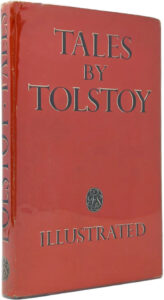
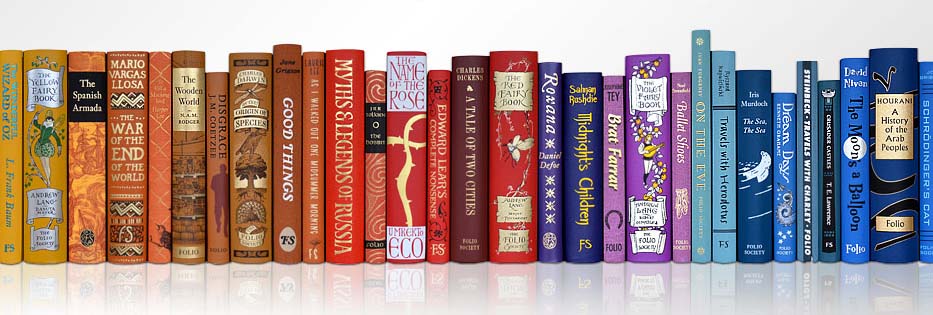

2 Comments
Harry Bagley · 24 April 2025 at 4:56 pm
Did the Folio’s edition of Searle’s Slightly Foxed but still Desirable come in a box?
Many thanks
Harry B
Daisy · 26 April 2025 at 6:51 am
Hi Harry – no, unusually this volume was released without a slipcase.
Dx